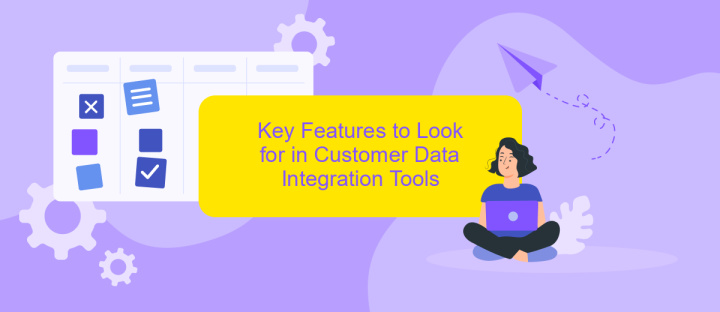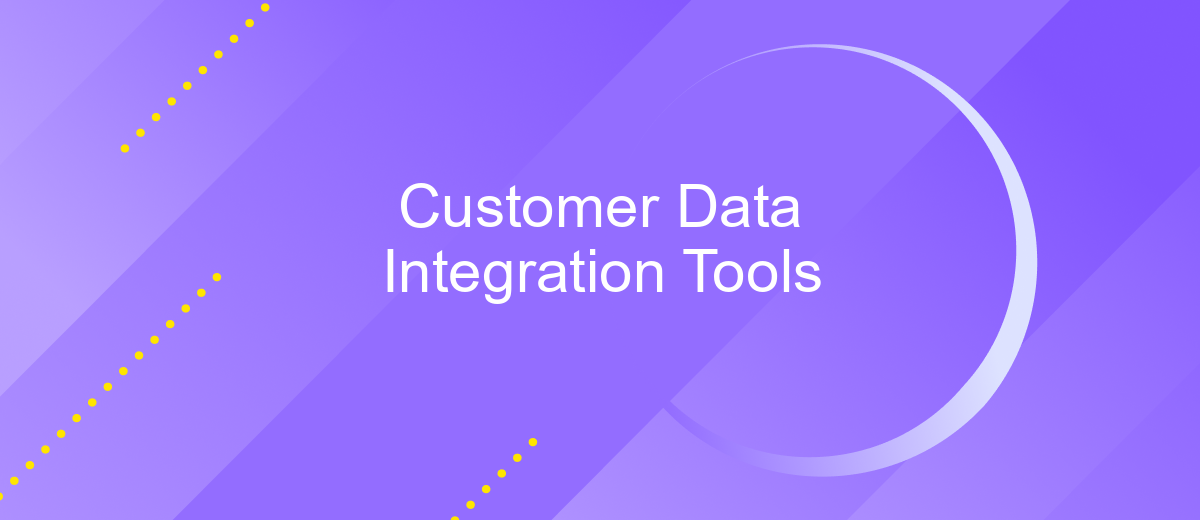Customer Data Integration Tools
Customer Data Integration (CDI) tools are essential for businesses seeking to consolidate and streamline customer information from various sources. These tools enable organizations to create a unified view of customer data, enhancing decision-making, improving customer experiences, and driving business growth. In this article, we will explore the key features, benefits, and top solutions available in the market for effective customer data integration.
Introduction
In today's data-driven world, businesses rely heavily on efficient customer data integration tools to streamline operations and enhance decision-making processes. These tools play a crucial role in consolidating data from various sources, ensuring seamless data flow and accuracy.
- Improved data accuracy and consistency
- Enhanced customer insights and personalization
- Streamlined business processes and operations
- Better compliance with data regulations
One such tool that stands out in the market is ApiX-Drive. It offers robust features to automate data integration across multiple platforms, reducing manual efforts and minimizing errors. By leveraging ApiX-Drive, businesses can effortlessly connect different systems, ensuring real-time data synchronization and improved operational efficiency.
Benefits of Customer Data Integration Tools

Customer Data Integration Tools offer numerous benefits for businesses aiming to streamline their data management processes. By consolidating data from various sources into a unified system, these tools enable companies to gain a comprehensive view of their customers. This holistic perspective allows for more accurate data analysis, leading to better-informed decision-making. Additionally, integrated customer data helps improve customer relationship management (CRM) by providing insights into customer behavior, preferences, and interactions across multiple channels.
Moreover, tools like ApiX-Drive facilitate seamless integration between diverse applications and platforms, automating data transfers and reducing manual efforts. This not only saves time but also minimizes the risk of errors associated with manual data entry. Enhanced data accuracy and consistency contribute to more effective marketing strategies and personalized customer experiences. Ultimately, Customer Data Integration Tools empower businesses to optimize their operations, enhance customer satisfaction, and drive growth by leveraging a unified and reliable data infrastructure.
Key Features to Look for in Customer Data Integration Tools

When selecting customer data integration tools, it's crucial to focus on features that enhance data accuracy, efficiency, and security. These tools should streamline the integration process and provide robust support for managing customer data effectively.
- Data Mapping and Transformation: Ensure the tool can map and transform data from various sources into a unified format.
- Real-Time Data Sync: The ability to synchronize data in real-time is essential for maintaining up-to-date information across all systems.
- API Integration: Look for tools that offer seamless API integration, such as ApiX-Drive, to connect different applications and automate workflows.
- Data Security: Robust security features, including encryption and access controls, are vital to protect sensitive customer information.
- Scalability: The tool should be scalable to accommodate growing data volumes and expanding business needs.
By focusing on these key features, businesses can ensure that their customer data integration tools not only meet their current needs but also provide a solid foundation for future growth and innovation.
Top Customer Data Integration Tools

Choosing the right customer data integration tool is crucial for businesses aiming to streamline their data management processes. These tools help in consolidating customer data from various sources, ensuring seamless data flow and enhanced data accuracy.
There are several top-notch customer data integration tools available in the market, each with its unique features and capabilities. These tools not only simplify the integration process but also enhance the overall efficiency of data handling.
- ApiX-Drive: A versatile tool that allows easy integration of various applications and services without requiring coding skills.
- Zapier: Known for its user-friendly interface, Zapier connects multiple apps to automate workflows.
- Segment: This tool specializes in collecting, transforming, and routing customer data to various destinations.
- Informatica: A robust solution offering extensive data integration capabilities for large enterprises.
- Talend: Provides comprehensive data integration and management solutions with a focus on data quality and governance.
By leveraging these tools, businesses can ensure that their customer data is accurate, up-to-date, and readily accessible. This not only improves operational efficiency but also enhances customer insights, leading to better decision-making and improved customer experiences.
- Automate the work of an online store or landing
- Empower through integration
- Don't spend money on programmers and integrators
- Save time by automating routine tasks
Best Practices for Implementing Customer Data Integration Tools
When implementing Customer Data Integration (CDI) tools, it is essential to start with a clear strategy. Begin by identifying and prioritizing the data sources that need to be integrated. This ensures that the most critical data flows seamlessly across systems. Establishing a data governance framework is also crucial to maintain data quality and consistency. Regularly monitor and audit data to prevent discrepancies and ensure compliance with regulatory standards.
Leveraging automation tools like ApiX-Drive can significantly streamline the integration process. ApiX-Drive offers a user-friendly interface to connect various applications without extensive coding, making it easier to synchronize customer data across platforms. Additionally, ensure that your team is well-trained on the new tools and processes. Continuous education and training help in maximizing the benefits of CDI tools, ensuring that your organization remains agile and data-driven. Regularly review and update your integration strategies to adapt to evolving business needs and technological advancements.
FAQ
What is Customer Data Integration (CDI) and why is it important?
How can CDI tools benefit my business?
What features should I look for in a CDI tool?
How do I integrate different data sources with a CDI tool?
Can CDI tools help with data automation?
Routine tasks take a lot of time from employees? Do they burn out, do not have enough working day for the main duties and important things? Do you understand that the only way out of this situation in modern realities is automation? Try Apix-Drive for free and make sure that the online connector in 5 minutes of setting up integration will remove a significant part of the routine from your life and free up time for you and your employees.


